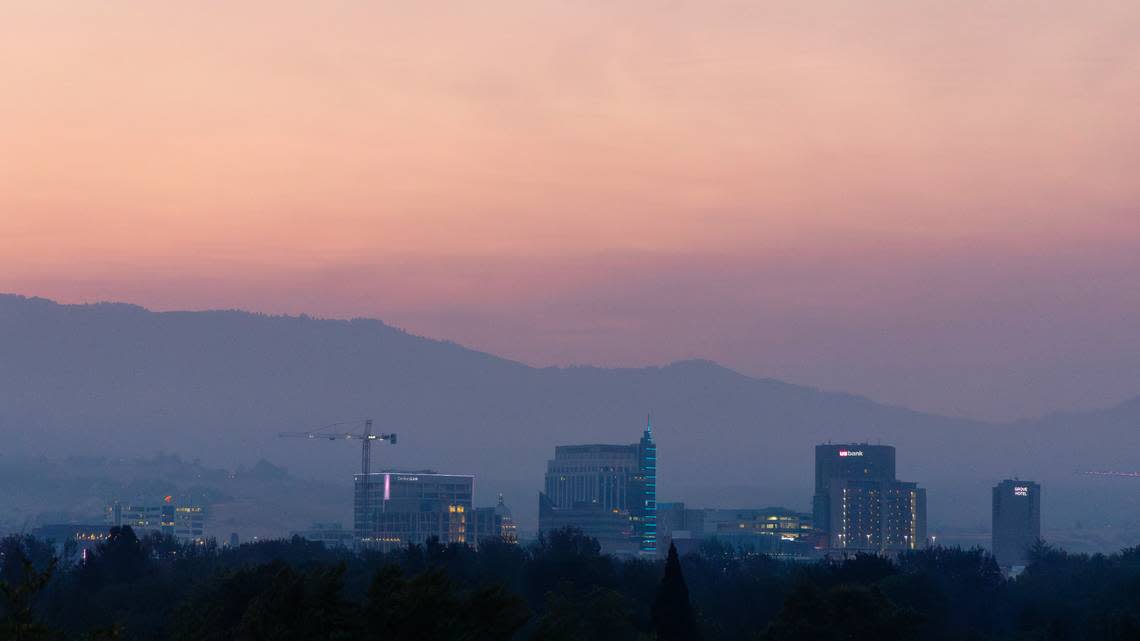Indoor air can be made safer than the smoky air outside. Here’s how to protect yourself

With smoke filling Boise’s skies this week, you might be heading indoors to avoid breathing the polluted air. But just heading indoors doesn’t guarantee that you’re safe from wildfire smoke. Here’s how to ensure that you’re in a building that’s safe from harmful particles.
Is indoor air safe?
Smoke from the outdoors can enter your home, primarily in three ways, according to the Environmental Protection Agency. Most obviously, it can enter through an open door or window. Ventilation systems that use outdoor air also pose a risk, as do cracks and small openings around doors and windows.
If you’re in a building without any of those features, chances are the air is safe, although it could get hot and stuffy without those forms of ventilation. But there are still ventilation options that don’t pose a risk.
Check the settings on your HVAC system
According to the EPA, the first step you should take is to find out if your HVAC system uses fresh air intake. If it does, you should change the settings so it recirculates air instead. For houses with a window air conditioning system, the agency suggests you close the outdoor air damper to avoid letting smoke inside. It also advises against using single-hose portable air conditioning units that vent outside and evaporative coolers.
What about air filters?
HVAC systems typically don’t come with high-efficiency filters, the EPA says. If yours doesn’t, the agency recommends getting a filter with a Minimum Efficiency Reporting Values (MERV) rating of 13 or higher for the best results against wildfire smoke. That ensures that the filter captures over 90% of large particles in the air and over 50% of small particles. Commercial buildings’ air filters typically have a higher MERV rating, with the American Society of Heating, Refrigerating and Air Conditioning Engineers recommending the use of a system with a MERV rating of 13 or higher, whenever possible.
If your HVAC system doesn’t have a high-efficiency filter, you can use a portable air cleaner, or fashion one yourself out of a box fan and a furnace filter.
You still need to limit some indoor activities
If you’ve taken these steps, you’ve probably got good air in your home, although the EPA recommends having N95 respirators on hand just in case.
Still, there are certain actions that the agency recommends you avoid. First of all, since you can’t get any outdoor ventilation, you shouldn’t do anything that can pollute the air inside. That includes smoking, using a gas stove or a wood furnace, spraying aerosol products and lighting candles. While indoor exercise is generally considered safe with the proper ventilation, as a precaution, the agency advises against any strenuous activity that might make it harder to breathe.






